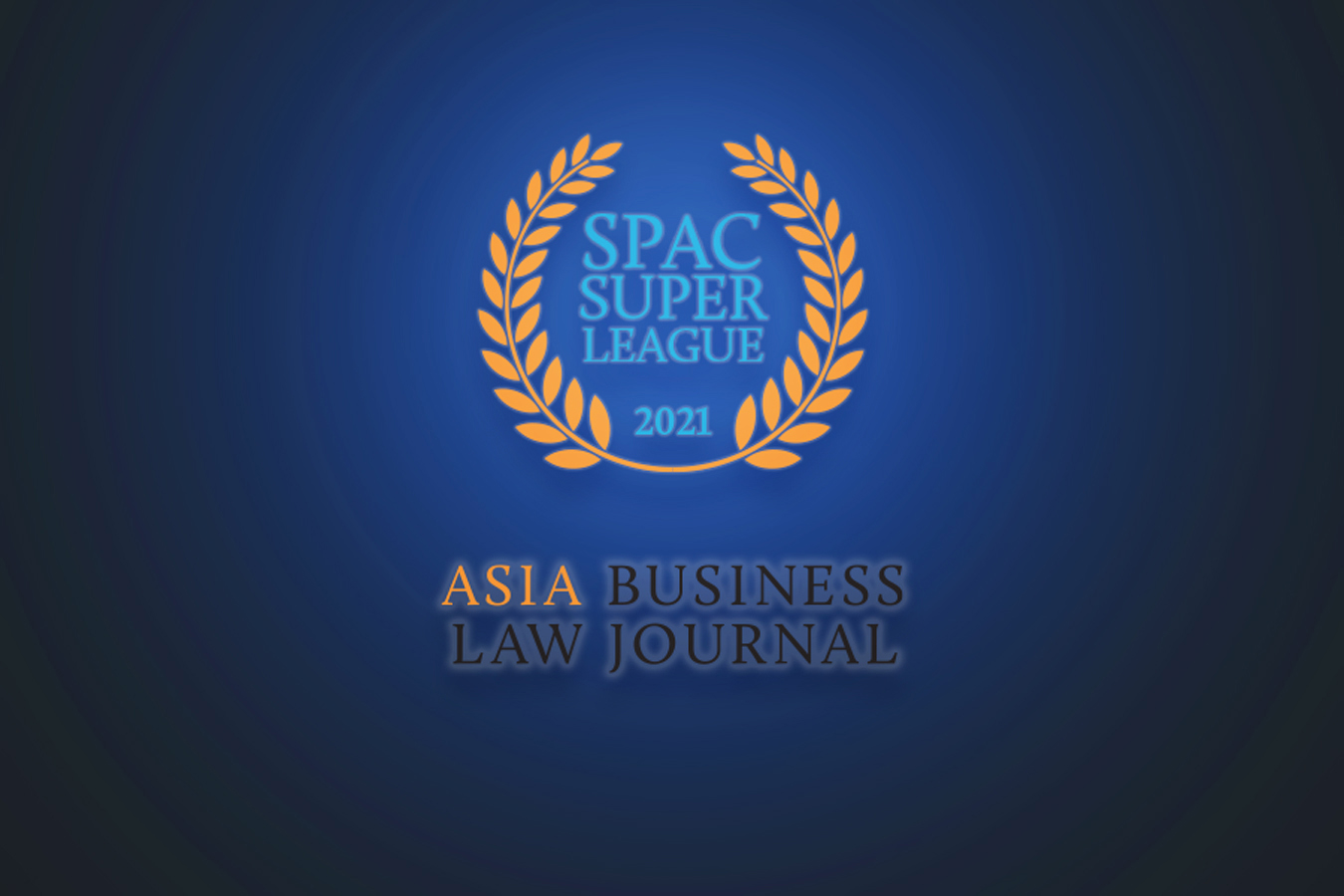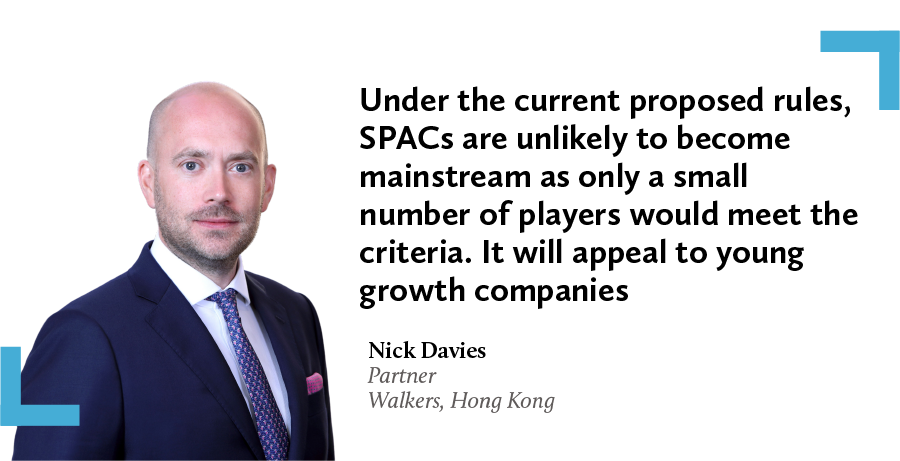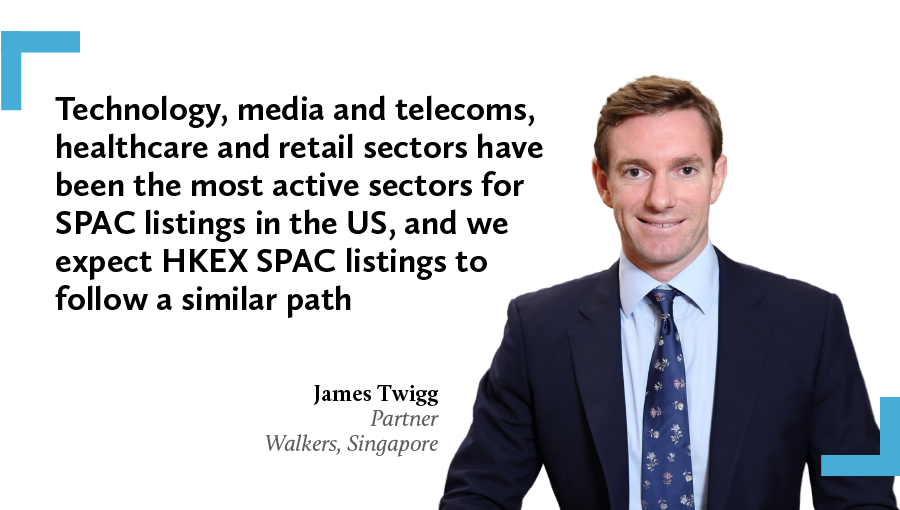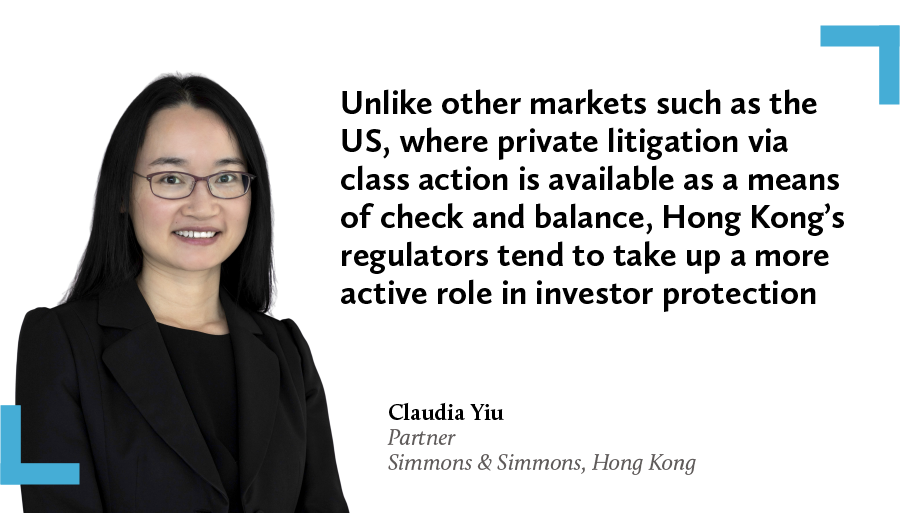SPACs have climbed into the big league of capital markets, so we crunched the stats on Asia-related SPAC listings to find the highest performing legal advisers. Mithun Varkey reports, with research by Miran Lim
As the pandemic has clutched the world in the past two years, the US capital markets have been gripped by another kind of fever – special purpose acquisition vehicles (SPACs). SPACs are blank-cheque companies that raise money in capital markets to acquire privately held targets, helping them skip lengthy and expensive IPO processes.
SPACs have since reshaped capital markets and fuelled deal activity in US stock exchanges, having raised USD83 billion from 248 SPAC listings in 2020. The first half of this year has already seen 362 SPACs raise more than USD110 billion in US markets.
This unprecedented activity, although initially in the US, is finding much favour in Asia, too. While Asian sponsors have been testing the waters for a while, the SPAC boom caught the imagination of Asian businesses, with the Singaporean taxi-hailing app Grab’s announcement of a US listing at a USD40 billion valuation via a business combination with Altimeter Growth Corp. The Grab listing, the biggest SPAC deal to date, made Asians sit up and take notice of the opportunity.
In other notable deals from the region, Indian renewable energy company ReNew Power completed a business combination with Nasdaq-listed SPAC RMG Acquisition Corp II for an enterprise valuation of about USD8 billion. Since then, Asia has become a hunting ground for SPACs.
Given the rising popularity of SPACs in the region, Asia Business Law Journal has tracked down the most prolific legal advisers helping Asia-related SPACs and their issuers to navigate these newly charted waters.
Our data on Asia-related SPACs go back to the third quarter of 2018, when Asian issuers started tapping the US SPAC market. There were a total of 34 Asia SPACs issuance from 2018, which raised a combined USD6 billion.
As Asian companies and sponsors jumped on the SPAC bandwagon, regulators and exchanges in Asia have also been forced to take note, with the region’s two biggest exchanges already laying the groundwork for allowing SPAC listings (see Asian bourses play catch-up). According to our data, of the 34 Asian SPACs listed since 2018, 27 have been on the Nasdaq, which raised more than USD4 billion, while the NYSE saw the remaining seven listings with about USD1.9 billion raised.
Our SPAC advisory league table, for the 12 months from 1 July 2020 to 30 June 2021, offers an insight into the most active legal advisers for Asia-related SPACs, as well as into broader trends in the space including the country of origin of sponsors, focus industry sectors and target jurisdictions, as well as business combination data. (see methodology)
The league tables rank the top SPAC legal advisers by value and volume, further broken down into top advisers to issuers by volume and value, and to underwriters by value and volume. We have also compiled a league table for the top offshore legal advisers for Asia-related SPACs.
Who is who
For the 12 months from the second half of last year to the first half of the current year, there were 25 Asian SPACs, which raised a total of USD5.33 billion. Our research has identified 19 leading global legal advisory firms that have acted on Asia-related deals, and the six most active offshore firms during the time.
Two Asian issuers tested the SPAC waters in all of 2018, raising a total of USD86 million, which increased to three issuers in 2019, raising an aggregated USD315 million, nearly four times the amount raised the previous year.
The popularity of SPACs among Asian issuers skyrocketed in 2020, even as the world was battling the pandemic, with 11 Asia-related SPAC issuances raising a combined USD1.9 billion. The trend continued well into 2021, with 18 issuers raising more than USD3.6 billion in the first six months of the year.
Kirkland & Ellis was the top legal adviser for Asian SPACs, advising the biggest number of deals in the period, and with the highest value. The US firm acted on seven deals with a combined value of USD1.9 billion.
New York-based law firm Ellenoff Grossman & Schole also acted on seven deals, topping the league table in volume, along with Kirkland, but in terms of value Ellenoff came in a close second, advising deals worth USD1.69 billion.
White & Case, with six deals worth USD1.67 billion, ranked a close third in the deal count. Davis Polk & Wardwell also acted on six deals, tying in third place, and finished fourth in value terms, with USD1.5 billion worth of listings.
Skadden rounded out the top five list, in both deal value and count, having acted on five deals that raised USD1.47 billion.
Kirkland and Ellenoff were the preferred advisers to issuers in value and volume, having advised six and five listings each, respectively. Davis Polk and Loeb & Loeb advised on three Asian SPAC issues each and tied for second place on our issuer league table for deal volume.
Becker & Poliakoff wrapped up the top five legal advisers to issuers by deal volume, with two IPOs. Baker McKenzie, Cleary Gottlieb, Clifford Chance, White & Case, Milbank, Orrick and Skadden advised one issuer each.
Of the advisers to issuers, Davis Polk stood third in terms of deal value at USD735 million, while White & Case and Orrick completed the top five legal advisers to issuers in deal value with one IPO each. White & Case’s deal was valued at USD360 million, while Orrick acted on a listing that raised USD261 million.
White & Case was the preferred adviser to Asia SPAC underwriters both for deal value and volume. The firm advised the underwriters to five deals, which raised USD1.31 billion in total. Skadden came a close second with the firm acting on four deals that raised a combined USD1.24 billion.
Davis Polk and Kramer Levin tied third with three listings each. Davis Polk’s deals were worth USD770 million, while Kramer Levin had IPOs worth USD130 million.
Ellenoff and Shearman & Sterling had two deals each, tying in fourth position. Ellenoff’s deals were worth USD561 million, while Shearman raised USD490 million. Rounding out fifth position were the following firms with a deal each: Blank Rome, Kirkland & Ellis, Paul Hastings, Ropes & Gray, Schiff Hardin, and White and Williams.
As for offshore firms, Maples Group was the clear leader both in terms of value and volume, having worked on 13 Asian SPACs in the period worth USD3.32 billion. Ogier and Appelby did three deals each for USD140 million and USD850 million, respectively, while Walkers, Forbes Hare and Mourant Ozannes acted on one IPO each.
Geographical breakup
Among Asian sponsors of SPACs, Hong Kong and China-based businesses were the first off the block, with the two deals in 2018 being sponsored by Hong Kong and mainland China-based sponsor.
Hong Kong sponsors have been the most active issuers from Asia, according to our data. Of the 34 SPAC listings from 2018 until the first half of 2021, which raised a total of USD6 billion, 14 sponsors were from Hong Kong, accounting for 42{e421c4d081ed1e1efd2d9b9e397159b409f6f1af1639f2363bfecd2822ec732a} of the deals. The SPACs issued by Hong Kong-based sponsors mopped up USD3.15 billion, or 52.5{e421c4d081ed1e1efd2d9b9e397159b409f6f1af1639f2363bfecd2822ec732a} of all the money raised by Asian SPACs.
Eight SPAC listings were sponsored by mainland China-based sponsors, which raised USD570 million, or about 9.5{e421c4d081ed1e1efd2d9b9e397159b409f6f1af1639f2363bfecd2822ec732a} of funds raised in the period. Singapore-based sponsors were behind four listings that raised a combined USD786.5 million or about 13.1{e421c4d081ed1e1efd2d9b9e397159b409f6f1af1639f2363bfecd2822ec732a} of the total.
There were five SPACs by US-based sponsors with an Asian focus in the period that accounted for 13.2{e421c4d081ed1e1efd2d9b9e397159b409f6f1af1639f2363bfecd2822ec732a} of the amount raised at an aggregate of USD795 million. Malaysian, Indonesian and London-based sponsors were behind one listing each, raising USD275 million, USD200 million and USD220 million, respectively.
In the 12 months from the second half of 2020 to the first half of 2021, Hong Kong sponsors accounted for 48{e421c4d081ed1e1efd2d9b9e397159b409f6f1af1639f2363bfecd2822ec732a} of the deals and 57.5{e421c4d081ed1e1efd2d9b9e397159b409f6f1af1639f2363bfecd2822ec732a} of the deal value. While Chinese and US-based sponsors backed four deals each, US-sponsored deals raised 12.6{e421c4d081ed1e1efd2d9b9e397159b409f6f1af1639f2363bfecd2822ec732a} of the deal value, and China-backed deals raised 7.3{e421c4d081ed1e1efd2d9b9e397159b409f6f1af1639f2363bfecd2822ec732a}
In terms of target geographies for business combinations, most SPACs had an Asia-Pacific focus, with 14 out of the 34 looking to invest in companies across the region. Meanwhile, eight SPACs were focused exclusively on China, and seven of the SPACs were proposing to combine with Southeast Asian companies. Four of the SPACs were interested in targets across the globe. Two SPACs were looking for targets in the US, and two were looking for targets in Europe, Middle East, and Africa.
More than USD1.8 billion raised was to be deployed in Southeast Asia exclusively, while China-focused SPACs raised a total of USD1.6 billion. SPACs with a mandate to combine with business across Asia raised a total of more than USD1.4 billion.
Sector focus
It is no surprise that, in terms of target sectors for these Asian SPACs, there is a significant focus on technology, given the pace of growth among regional technology companies as well as the massive market that the region’s emerging middle class offers to consumer business. There is also a significant appetite for healthcare investment among the SPACs.
Of all the SPACs, 13 focus primarily on the technology media and telecoms (TMT) sector, which raised a combined USD3 billion, while nine SPACs proposed to invest in the region’s consumer sector, with a total of USD1.84 billion to deploy.
There were seven healthcare-focused SPACs that had USD1.27 billion in dry powder. Gaming and entertainment was another sector that attracted significant interest from SPAC issuers, with four companies looking to deploy about USD905 million into the industry in Asia. There were seven issuers focused on the financial services sector, including fintech companies, that raised a total of USD1.67 billion. Education, infrastructure and renewable energy were other sectors that saw interest among SPACs. It is important to note that some SPACS related to more than one sector.
Dry powder
Of the 34 SPACs that raised USD6 billion since 2018, 16 had so far either completed a business combination or announced one. The announced business combinations would deploy USD2.35 billion of the capital raised in the listings. The remaining 18 have yet to announce any business combinations, and they have a total of USD3.64 billion in dry powder that is waiting to be invested in acquiring targets. At least three of these 18 have had difficulty finding the right targets within the two-year deadlines that SPACs have for completing the business combinations, and have filed for two-year extensions.
The USD3.64 billion in funds with SPACs that are waiting to be deployed offers legal and financial advisers in Asia a phenomenal business opportunity. All dry powder will go towards acquiring targets in Asia and ringing in deals for the advisers.
Although there was a slowdown in US issuances in the second half of the year, with Asian exchanges creating enabling frameworks, we may yet see a bigger boom for Asian SPAC issuances.
Regional stock exchanges that missed out on the SPAC boom in the US are now scrambling to get in the game and issue new rules to allow listing of the blank-cheque companies
Singapore was the first to set the ball rolling with draft regulations issued earlier this year, and soon its regional rival, Hong Kong, followed suit. Other bourses in the region such as Tokyo Stock Exchange and Taiwan Stock Exchange have set up panels to study the possibility of allowing SPACs, while the Securities and Exchange Board of India has also proposed allowing SPAC listings.
While all regional exchanges are contemplating new SPAC regimes, Singapore and Hong Kong are the most formidable listing venues in the region, and likely to make the most mileage from the SPAC frenzy.
Hong Kong Exchanges and Clearing (HKEX) launched a 45-day public consultation of the planned SPAC listing regime, which ended at the end of October. There is still no timetable for an official launch.
On 3 September, the Singapore Exchange (SGX) relaxed listing rules to enable SPAC listing in the city, making it the first in Asia. However, lawyers believe Singapore’s early start won’t significantly alter the competitive landscape between the two exchanges.
The ultra-low interest rates and money printing amid the covid-19 pandemic has driven a SPAC frenzy in the US since 2020, although listings have significantly slowed due to tightening oversight and fears of bubbles.
Nonetheless, Asian bourse operators are rushing to embrace the new model after an increasing number of well known Asian startups went public in the US. A total of 22 SPACs headquartered in Hong Kong and mainland China were listed in the US, raising USD4.2 billion, according to Asia Business Law Journal’s SPAC research.
Two Hong Kong, eight mainland China and two Singapore companies have listed in the US via de-SPAC transactions in the past three years, with a combined market capitalisation of HKD26 billion (USD3.34 billion), according to the Stock Exchange of Hong Kong.
According to its consultation paper, Hong Kong’s proposed SPAC framework is much stricter than its global peers. Retail investors are not allowed to invest, and there are other key differences.
Hong Kong’s relatively conservative SPAC regime aims to attract large and high-quality SPACs and de-SPAC targets for Hong Kong listing, said Claudia Yiu, a Hong Kong-based partner at Simmons & Simmons. HKEX intends to uphold efforts to combat back-door listings and safeguard Hong Kong’s reputation and quality as a premier listing venue, keeping a higher standard of investor protection, she said.
“Hong Kong has a high ratio of retail investor participation in the stock market,” said Yiu. “Also, unlike other markets such as the US, where private litigation via class action is available as a means of check and balance, Hong Kong’s regulators tend to take up a more active role in investor protection.
“The stringent SPAC regime intends to address various market concerns. The de-SPAC targets are required to fulfil the IPO listing requirements so that no sub-standard businesses and/or assets could make use of the SPAC regime to circumvent the traditional IPO listing requirements. The minimum fundraising size of HKD1 billion is a high threshold to allow only large and high-quality SPAC listings.”
In contrast, there is no requirement of fundraising size for Singapore and US SPACs, which raises doubts that it will make the Hong Kong bourse less competitive. But Nick Davies, Hong Kong-based partner of corporate and investment funds group at Walkers, believes it is a sensible move to emphasise professional investment.
“The anticipated minimum fundraising size for HKEX SPACs is not off-market with what we see in terms of the global SPAC market, with the average SPAC raising two or three times that amount,” said Davies. “Under the current proposed rules, SPACs are unlikely to become mainstream as only a small number of players would meet the criteria. It will appeal to young growth companies,” he said.
As the SGX launched its SPAC regime, James Twigg, a partner at Walkers’ Singapore office, said he had seen considerable interest for SPAC listings in the city. The two exchanges were targeting different sectors, said Twigg.
“HKEX has traditionally been the exchange of choice for Chinese companies,” he said. “Technology, media and telecoms (TMT), healthcare and retail sectors have been the most active sectors for SPAC listings in the US, and we expect HKEX SPAC listings to follow a similar path.
“The SGX is dominated by mature local companies in traditional sectors. The Singapore government and the SGX will be hoping that the introduction of rules permitting SPAC listings will create new appeal as a destination for young, high-growth companies, particularly in the tech sector.”
Lorna Chen, Asia regional managing partner and head of Greater China at Shearman & Sterling, said it was unlikely that Asia’s IPO markets would change dramatically because of Singapore’s launch of SPAC listings. “Capital markets need many years to be nurtured, and Hong Kong continues to be the best place for IPOs in the minds of Chinese companies.”
Chan suggested that Chinese companies seeking SPAC listings should focus on both domestic and overseas regulations. “Apart from following any existing and new rules and guidance from mainland China’s regulators, sponsors from China need to know that other regulators – namely, the US Securities and Exchange Commission and the Financial Industry Regulatory Authority – have expressed increasing concerns over the use of SPACs in US markets.”
Methodology
Asia SPACs are special acquisition companies that are either sponsored by Asia-based businesses and individuals, or blank-cheque companies that have a specific mandate to invest their funds in Asia. To identify Asian SPACs, we examined the S1 filings made by SPACs with the US Securities and Exchange Commission to identify the sponsors and their proposed business. We then compiled all the SPACs that have an Asian connection, studied their listings and identified the law firms advising on these deals. We ranked them on the basis of their roles by deal count and aggregate deal value. Our league table ranks all legal advisers to Asian SPACs based on cumulative deal value and the total number of deals. We have further ranked the legal advisers on the basis of their roles – legal advisers to issuers, legal advisers to the underwriters and offshore legal advisers – by deal count and aggregate deal value.
The explosive growth of special purpose acquisition companies (SPACs) in the US is coming to Asia. While the hype is immense, companies and investors need to do their homework before jumping into these new spaces
Lessons for APAC de-SPACs
Like many US financial innovations exported worldwide, special purpose acquisition companies (SPACs) have garnered a mix of enthusiasm from companies and investors, and caution from regulators in Asia. For Asian companies looking to de-SPAC in US markets, the authors have compiled a set of lessons learned to allow businesses to maximise the odds of success in using this innovative deal structure.
Have a clear thesis in mind. Many companies seem to jump on financial innovations to make quick returns. For much of 2019 and 2020, SPACs had that flavour. Going public at a guaranteed valuation with no revenue track record seemed too good to be true. Unfortunately, it was.

Partner at Baker McKenzie in
San Francisco
T: + 1 415 984 3841
E: derek.liu@bakermckenzie.com
As a category, de-SPAC companies had significantly lower returns than traditional IPO companies. Many companies that went to the market on the basis of their projections saw dramatic drops when those projections hit inevitable road bumps. To make matters worse, redemption rates for the amount in trust – the funds raised in the SPAC’s IPO – remain stubbornly high, while private investment in public equity (PIPE) financings have become significantly more challenging.
So, for all the negative headwinds, why de-SPAC? For starters, early stage companies seeking to access lower cost of capital in the US market have few alternatives. Traditional IPOs are still not receptive to earlier stage companies that are seeking to market based on projections.
Another driver is that partnering with a well-connected SPAC sponsor can give companies a leg-up on capital markets expertise – something particularly valuable for APAC-based companies. Finally, the guaranteed funding or valuation is still there, in the right situation, all of which leads to a second observation.
Not all sponsors are equal. With 650 or so SPACs in the market, a “public-company ready” late-stage target has no shortage of suitors. How, then, does one select the right SPAC?
- First, expertise in the right industry or geography. The sponsor will take up seats on your board and has an outsized role in any PIPE or subsequent financing activities. Finding someone who can “translate” your APAC-centric story to a US audience is a significant asset. The right sponsor can also help you professionalise and grow your business as you take in more capital.
- Second, access to capital. Many sponsors are also private equity or venture capital firms that can deploy their proprietary capital to support the de-SPAC. Finding a firm that can backstop redemptions or commit PIPE capital not only de-risks the de-SPAC transaction but is a powerful signal to the US market of support.
- Third, alignment of interests. Sponsors get a significant amount of “free” equity, whether the deal succeeds or fails. Look for sponsors that can show their conviction by putting more capital (including their promote) at risk.
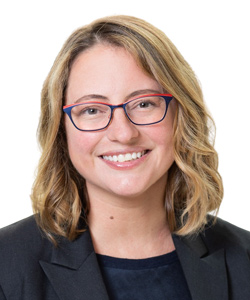
Partner at Baker McKenzie in New York
T: + 1 212 626 4456
E: michelle.heisner@bakermckenzie.com
It is not all about valuation. Since nearly all de-SPACs are fundraising events, the valuation should be thought of as the pre-money valuation offered by the SPAC. However, as SPAC funds are subject to redemption, the SPAC cannot generally guarantee funding at that negotiated valuation. Trading below the offer price is frequently taken to be a negative signal to the market, making future fundraising more challenging, so it is better to select a reasonable valuation that will generate sustained investor interest, including in the PIPE and public trading, rather than aggressively negotiating to maximise a headline valuation.
It is all about the PIPE. With redemptions running at high percentages, any funds raised in the SPAC’s IPO should be considered at-risk capital. Even if sponsors offer up a minimum cash closing condition, that closing condition only comes into play late in the process, when it is generally painful to terminate due to sunk costs and market perceptions. The only “safe” capital is the funding raised in the PIPE transaction that usually accompanies the announcement of the de-SPAC transaction and is not subject to redemption. In the current market, PIPE fundraising has become more challenging. Financial investors looking to profit from the de-SPAC “pop” have left the market and/or have their money tied up in existing investments. Companies must now market to longer-term investors. That trend is broadly positive, as investors are likely to stay and support the stock for longer. But it does mean that companies should budget more time pre-announcement to have conversations with potential PIPE investors.
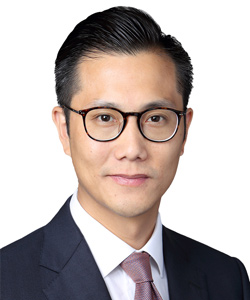
Partner at Baker McKenzie in Hong Kong
T: + 852 2846 1718
E: derek.poon@bakermckenzie.com
While the authors have worked on transactions where the PIPE marketing has taken place post-transaction announcement, we have seen the challenge of such an approach, notably that post-announcement trading activity (if lower than par) will significantly depress investor appetite.
Be public company ready. SPACs have rightly been marketed as a faster way to go public, but faster does not mean skipping any steps. Companies will still need two or three years of Public Company Accounting Oversight Board-audited (PCAOB) financial statements to go public, and will still need adequate internal controls to be able to give required Sarbanes-Oxley compliance certifications.
As an APAC-based company listing in the US, be prepared to face enhanced scrutiny around related party transactions, anti-corruption or anti-money laundering procedures, and financial controls from US regulators and investors. Selecting board members with US public company experience is valuable in building out accounting, legal and investor relations functions. While the temptation exists to outsource everything to accounting and law firms, having the capabilities in-house will save money in the long run and result in greater coherence.
Projections. For many SPACs, forward-looking projections are crucial since historic financials may not justify their desired valuation and anticipated growth. The US Securities and Exchange Commission has expressed significant ambivalence regarding the use of projections in de-SPACs, but has not yet prohibited them.
For a de-SPACing company, the risk from projections is quite simple: What happens if they are not met? Projections go towards management credibility. The negative coverage associated with failing to meet projections is often worse than accepting a lower valuation in the first instance.
Further, investors who lose significant value when projections are reset are primed to cause trouble in the form of shareholder litigation. When using projections, ensure they build on realistic assumptions, with significant buffers built in to account for inevitable delays and underperformance.
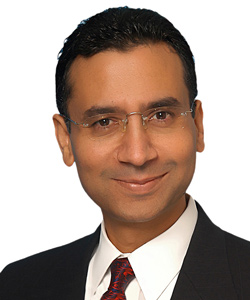
Partner at Baker McKenzie in Singapore
T: + 65 6434 2684
E: ashok.lalwani@bakermckenzie.com
Transaction fees. Going public is inherently an expensive proposition. A de-SPAC comes with visible and invisible fees. On the visible side, issuers should expect to pay underwriting fees from the initial IPO, legal fees for two sets of counsel, investment banking fees for de-SPAC advisory services, and accounting fees. But it is the dilution built into the de-SPAC structure itself that is the highest hidden cost.
Most prominent is the sponsor promote, which typically amounts to free equity worth 20{e421c4d081ed1e1efd2d9b9e397159b409f6f1af1639f2363bfecd2822ec732a} of the SPAC’s IPO capitalisation. Following the promote are warrants, which are generally exercisable at 15{e421c4d081ed1e1efd2d9b9e397159b409f6f1af1639f2363bfecd2822ec732a} above the SPAC issuance price of USD10 per share (or USD11.50). These warrants provide a ready source of additional capital. However, they also serve as a relatively sizable overhang on the public stock, and can amount to anywhere between 25{e421c4d081ed1e1efd2d9b9e397159b409f6f1af1639f2363bfecd2822ec732a} to 50{e421c4d081ed1e1efd2d9b9e397159b409f6f1af1639f2363bfecd2822ec732a} of the SPAC’s original capitalisation, which is not reduced by redemptions. As the PIPE financing situation becomes more challenging, investors increasingly ask for structured instruments such as convertible debt, which come with their own set of economic downsides.
Avoiding litigation. Perhaps nothing epitomises the US public markets more than shareholder litigation. The single-largest source of risk for de-SPACs is so-called disclosure claims (i.e. allegations that the target company made misrepresentations regarding the state of its business in public disclosures). Because of the common use of forward-looking projections in de-SPAC marketing, the inherent risk that those projections are not met becomes a built-in source of litigation risk. Another common source risk is that the SPAC sponsors, given their incentive to close a deal or lose their investment, are not sufficiently careful in conducting due diligence on the target.
Be flexible. SPACs are a fast-changing space. Singapore Exchange launched an initiative to entice SPAC listings in September, and at the time of writing, Hong Kong were actively considering allowing SPAC listings. US regulators are also actively reviewing the structure. Changes in regulations concerned with foreign investment and even international political tensions can make some de-SPACs more challenging.
Choosing the right advisers. Because SPACs are such a new instrument in the region, many local adviser teams have never directly worked on a de-SPAC transaction. It is not uncommon – and generally beneficial – for advisers to work in cross-border teams between the home country and the US. The local team can leverage the greater expertise of US practitioners in de-SPAC transactions while still providing on-the-ground local knowledge.
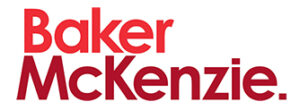
300 East Randolph Street, Suite 5000
Chicago, IL 60601 US
Tel: +1 312 861 8000
SPACs on the rise in Asia
There is significant interest in launching special purpose acquisition companies’ (SPACs) IPO transactions from mainland China, Hong Kong, Singapore, North and Southeast Asia-based financial institutions, investment banks, private equity and venture capital funds, corporate finance firms, asset management firms, promoters and private investors.
To date, the NYSE and Nasdaq are the stock exchanges where most of the SPAC IPOs have been launched. Global SPAC promoters, including Asia-based ones, have sought market exposure and access to the immense US investor pool of capital on such exchanges, particularly the US and the global institutional and high net worth investor pool.
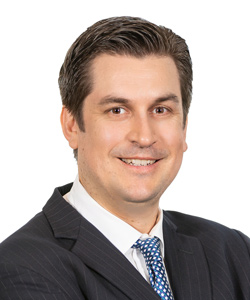
Partner at Maples Group in Hong Kong
T: +852 3690 7405 / +65 8388 8567
E: matt.roberts@maples.com
Following the implementation of a new regime to permit the listing of SPACs on the Singapore Stock Exchange (SGX), and with SPAC listings also soon to be possible on the Stock Exchange of Hong Kong (SEHK), there are now some further compelling options for Asia-based SPAC promoters and investors.
Singapore SPACs now available
On 3 September 2021, the SGX amended its listing rules to permit SPAC IPOs. This exciting development has been positively received by the market. The author has received a number of enquiries from current and prospective clients keen to explore the potential for listing a SPAC on the SGX using a Cayman Islands exempted company as the SPAC issuer.
Cayman Islands exempted companies continue to be a powerful tool providing Singaporean and Asia-based SPAC promoters with the right corporate and governance framework to attract and maintain investor funding, incentivise management, and promote the objectives of key stakeholders. The use of a Cayman Islands exempted company provides the right structure for the SPAC to be in a position to consummate a business combination following its IPO on the SGX, once the board of the SPAC has identified a prospective target for it to acquire or merge with, commonly known as the de-SPAC.
For a SPAC to be listed on the SGX under its SPAC framework, the SGX has stated that the SPAC must have these key features:
- The SPAC must have a minimum market capitalisation of SGD150 million (USD110 million).
- The business combination or de-SPAC transaction must take place within 24 months of the SPAC’s IPO, with an extension of up to 12 months subject to fulfilment of prescribed conditions.
- There is a moratorium on the trading of sponsors’ shares from IPO to de-SPAC, a six-month moratorium after de-SPAC and, for applicable resulting issuers, a further six-month moratorium on 50{e421c4d081ed1e1efd2d9b9e397159b409f6f1af1639f2363bfecd2822ec732a} of shareholdings.
- Sponsors must subscribe to at least 2.5-3.5{e421c4d081ed1e1efd2d9b9e397159b409f6f1af1639f2363bfecd2822ec732a} of the IPO shares or units or warrants, depending on the market capitalisation of the SPAC.
- A business combination or de-SPAC transaction can proceed if more than 50{e421c4d081ed1e1efd2d9b9e397159b409f6f1af1639f2363bfecd2822ec732a} of independent directors approve the transaction and more than 50{e421c4d081ed1e1efd2d9b9e397159b409f6f1af1639f2363bfecd2822ec732a} of shareholders vote in support of the de-SPAC transaction.
- Warrants issued to shareholders will be detachable, and the maximum percentage dilution to shareholders arising from the conversion of warrants issued at the SPAC’s IPO is capped at 50{e421c4d081ed1e1efd2d9b9e397159b409f6f1af1639f2363bfecd2822ec732a}.
- All independent shareholders are entitled to redemption rights.
- There is a sponsor promote limit of up to 20{e421c4d081ed1e1efd2d9b9e397159b409f6f1af1639f2363bfecd2822ec732a} of issued shares at the SPAC’s IPO.
Further information on the SGX’s new rules are set out in its response paper on proposed listing framework for SPACs.
In terms of the procedure, the SPAC may be incorporated quickly, with the relevant documents returned from the Cayman Islands registrar of companies in as little as 24 hours. The SPAC is incorporated in the same way as any other Cayman Islands exempted company, although with a SGX listing rule-compliant SPAC-specific memorandum and articles of association (M&A) incorporating certain SPAC provisions, including provisions regulating the SPAC’s entry into a prospective business combination (de-SPAC). The M&A will govern the SPAC’s operations for its lifespan (generally two years unless otherwise extended, such as for a further 12 months to facilitate a de-SPAC) until the SPAC identifies and consummates a de-SPAC transaction.
In the event it does not do so within the prescribed lifespan, or if it identifies a de-SPAC deal that is not approved by the requisite majority of investors, then the SPAC will be liquidated and dissolved, and the subscription funds returned to investors who would have their shares redeemed, minus certain expenses associated with the SPAC’s IPO and the SPAC’s maintenance (if this occurs, then the sponsor or founders will lose their capital on liquidation). The shareholders of a SPAC will be entitled to redeem their shares and receive the return of their funds under a de-SPAC, even if they vote for the de-SPAC to occur.
Hong Kong SPACs on the way
SPAC developments in Hong Kong are also very positive. The SEHK on 17 September 2021 published a consultation paper seeking market feedback on proposals to create a listing framework for SPACs in Hong Kong. The SEHK sought market feedback on its SPAC proposals and the proposed listing rules to implement them by the prescribed deadline of 31 October 2021.
The SEHK has indicated a number of key proposals in the consultation paper for which market feedback was sought. These included, but were not limited to:
Pre de-SPAC transaction proposals:
- The subscription for and trading of a SPAC’s securities would be restricted to professional investors only, with a minimum threshold specified for the distribution of SPAC shares and warrants. This restriction would not apply to the trading of the successor company (being the listed issuer following the completion of a business combination or de-SPAC transaction) shares post the business combination or de-SPAC transaction. Notably, this requirement is different to the approach taken by other exchanges in the US, SGX and in Europe (Euronext), where retail investors are permitted to invest in SPACs.
- SPAC promoters must meet suitability and eligibility requirements, and each SPAC must have at least one SPAC promoter, which is a Hong Kong Securities and Futures Commission (SFC) licensed firm, being firms with a type 6 (advising on corporate finance) and/or a type 9 (asset management) licence issued by the SFC, and holding at least 10{e421c4d081ed1e1efd2d9b9e397159b409f6f1af1639f2363bfecd2822ec732a} of the promoter (sponsor) shares.
- Promoter (sponsor) shares are proposed to be capped at a maximum of 30{e421c4d081ed1e1efd2d9b9e397159b409f6f1af1639f2363bfecd2822ec732a} of the total number of all shares in issue as at the initial offering date, and a similar 30{e421c4d081ed1e1efd2d9b9e397159b409f6f1af1639f2363bfecd2822ec732a} cap on dilution from the exercise of warrants is also proposed.
- The funds expected to be raised by a SPAC from its initial offering must be at least HKD1 billion (USD128 million).
De-SPAC transaction proposals:
- A successor company must meet all new listing requirements, including minimum market capitalisation requirements and financial eligibility tests.
- Independent third-party investment would be mandatory and, subject to certain criteria, must constitute between 15-25{e421c4d081ed1e1efd2d9b9e397159b409f6f1af1639f2363bfecd2822ec732a} of the expected market capitalisation of the successor company, essentially supporting the ultimate valuation of the successor company.
- A de-SPAC transaction must be approved by SPAC shareholders at a general meeting, which would exclude the SPAC promoter and other shareholders with a material interest.
- SPAC shareholders must be given the option to redeem their shares prior to a de-SPAC transaction, a change in SPAC promoter, and any extension to the deadline for finding a suitable de-SPAC target. Interestingly, the SEHK has proposed that shareholders may only redeem if they vote against one of these matters, which is again a departure from the approach seen in other jurisdictions such as the US, where shareholders may vote for one of these matters and still request a redemption of their shares.
Liquidation and de-listing:
- If a SPAC is unable to announce a business combination or de-SPAC transaction within 24 months, or complete one within 36 months, the SPAC must liquidate and return 100{e421c4d081ed1e1efd2d9b9e397159b409f6f1af1639f2363bfecd2822ec732a} of the funds it raised (plus accrued interest) to its shareholders, following which the SPAC will be delisted.
It is widely anticipated that, following the consultation period and the finalisation of its position on the key proposals described, the SEHK will implement its new SPAC regime to permit Hong Kong SPACs to be listed sometime in late 2021 or early 2022.
With a significant proportion of Cayman Islands companies listed on the SEHK and representing more than 54{e421c4d081ed1e1efd2d9b9e397159b409f6f1af1639f2363bfecd2822ec732a} of all the companies listed on the main board of the SEHK as at the end of 2020, the author expects that Cayman Islands exempted companies will continue to be the SPAC issuer vehicle of choice for Hong Kong SPAC IPOs.

Maples Group
26/F Central Plaza, 18 Harbour Road
Wan Chai, Hong Kong
Tel: +852 2522 9333
Email: hkinfo@maplesandcalder.com

